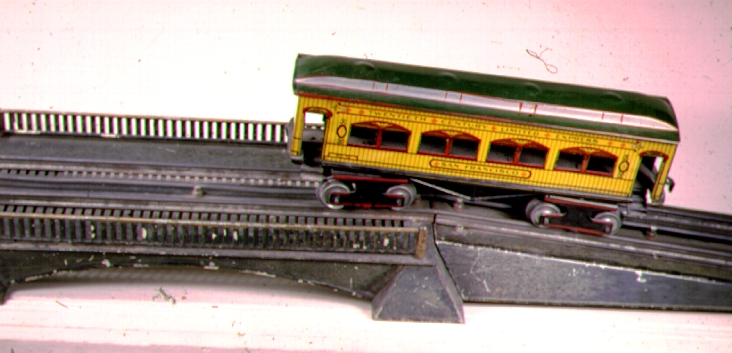100 Bridge and friends - The 100 was always the basic bridge, it had two approaches that simply connected together. The No. 101 Bridge was always the same except it had two ramps and a viaduct section. When the bridge was made for One gauge track, it was numbered 101-1, when made for electric track it was numbered 101-3, and if the bridge was for One gauge electrical track it was numbered 101-1-3. Bridges built to use with wide gauge track were numbered 101-2-3. Most collectors prefer to display these bridges with the center section and what No. 100s that have survived have probably been combined with the center viaduct section and effectively converted into an Ives No. 101

Circa 1904-08 - Here's the basic No. 100 bridge.
Circa 1902 - The earliest bridge made by Ives, this one is entirely hand painted, red with a couple white stripes below the rails. The round holes in the girders are unique to this bridge but are exactly as shown in the 1902 catalog.

Circa 1903-04 - Another early bridge this Ives 101 has a red handpainted base with blue-stripped litho fencing.
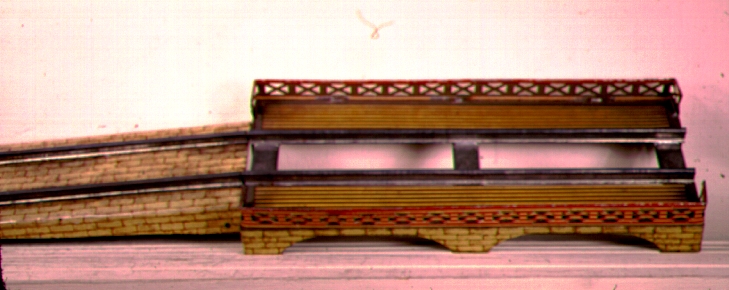
Circa 1905-1906 - A very early No. 101 bridge for 0 gauge mechanical track, it had plain yellow brick ramps, butterscotch platforms and red candy stripe girders along the side.

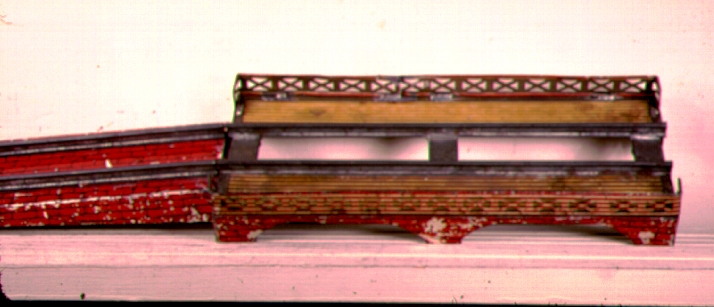
Circa 1904-1907 - Another early No. 101 for clockwork 0 gauge, this one is identical to the first one only it has red brick ramps and base. The one below has blue/white striped litho on the bridge railings.
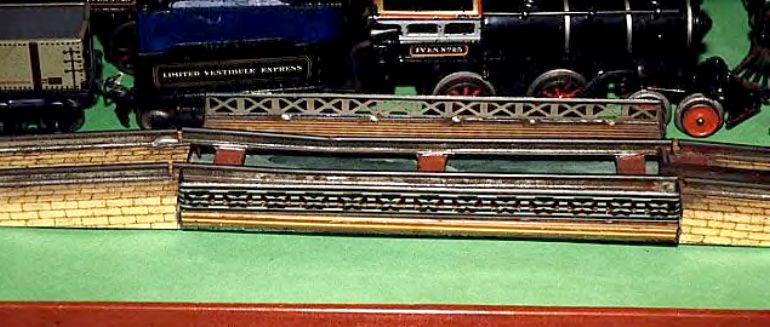
This one is actually a lift bridge circa 1905.

The bridge above is from approximately 1906-1908, note that it has a red candy stripes on top of the platform and that it is actually two sections with the track in the middle. The example below is a couple years later and has a brick litho to the platform top and is one piece with no opening below the track.
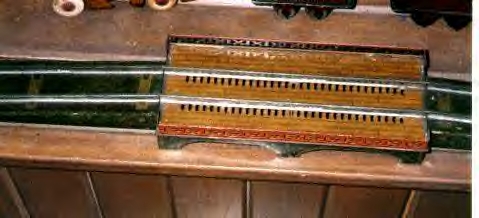
Circa 1907-1909 - Later litho on the approaches and viaducts, but still has wood litho on bridge deck, the bridge below would be from a similar time period.
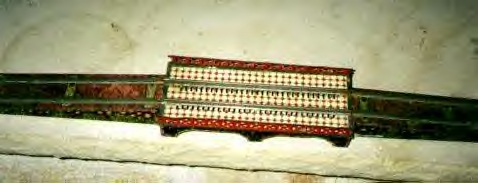

Circa 1910 - Another 101, somewhat later with the green rock litho ramps and double hex bridge deck. Below is a picture of the ramp, notice the small plate inserted in the end that reads "THE IVES MINATURE RAILWAY SYSTEMS".

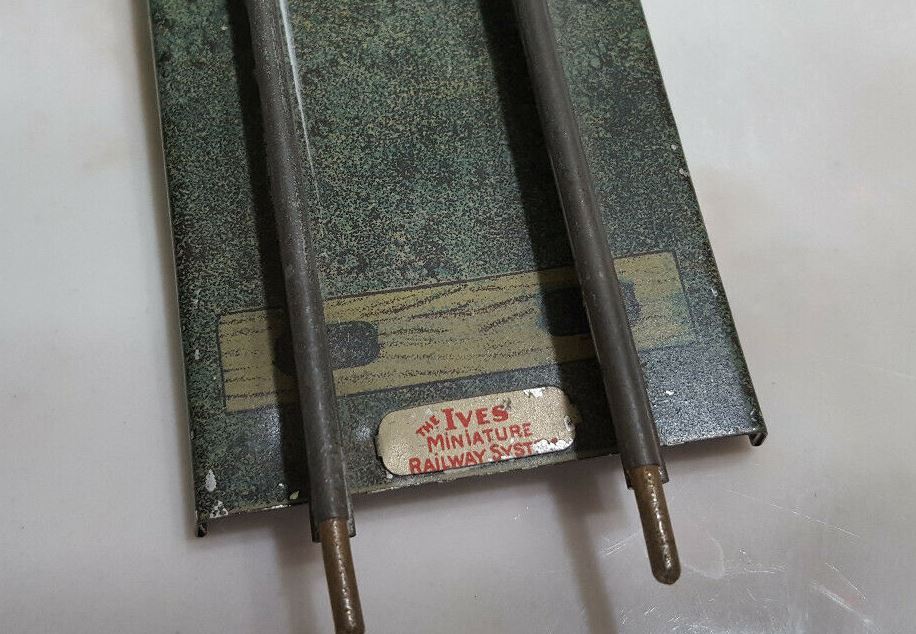

Circa 1910-12 - Note the different litho on the ramps for this No. 101 and that the girder-type fencing is now painted.

We'll date this bridge to the 1910-12 era mainly because the electric track is the old mechanical track with the third rail soldered in after the fact. Something that we believe they only did for a few years after they went into electric trains.
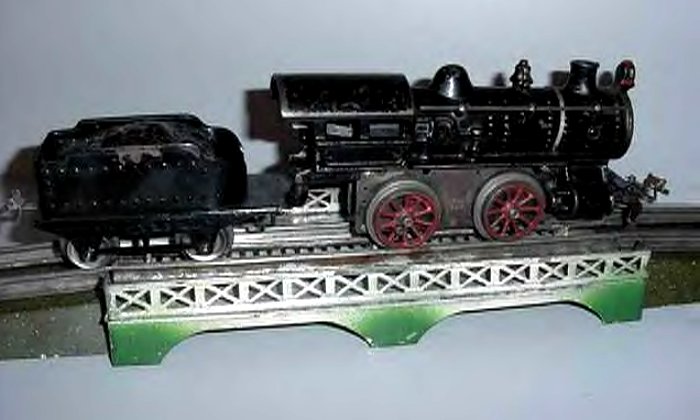
Circa 1915-1922 - No. 101 bridge, painted with girders.
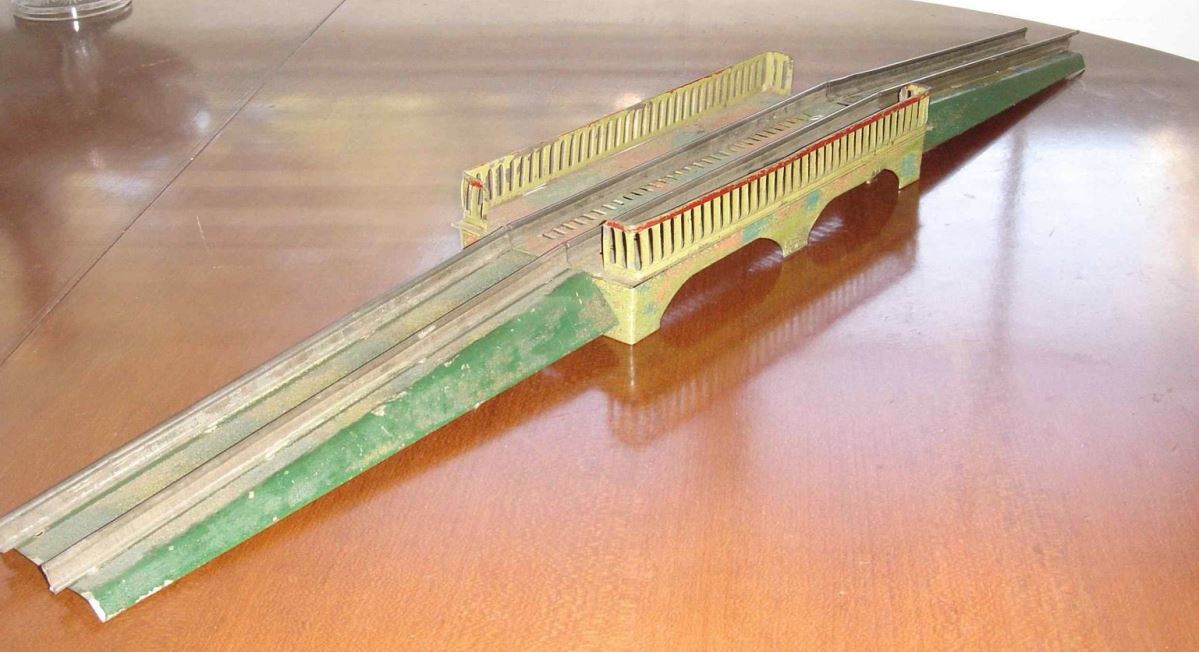
Circa 1920s, painted with vertical slates.
Circa 1910-20 - This bridge would correctly be numbered a No. 101-1-3 as it appears to be a three rail bridge for 1 gauge equipment. If you look closely the center rail is a separate piece that could be removed.

The bridge above and below would be numbered 101-2-3 and is the wide gauge version from the early 1920s
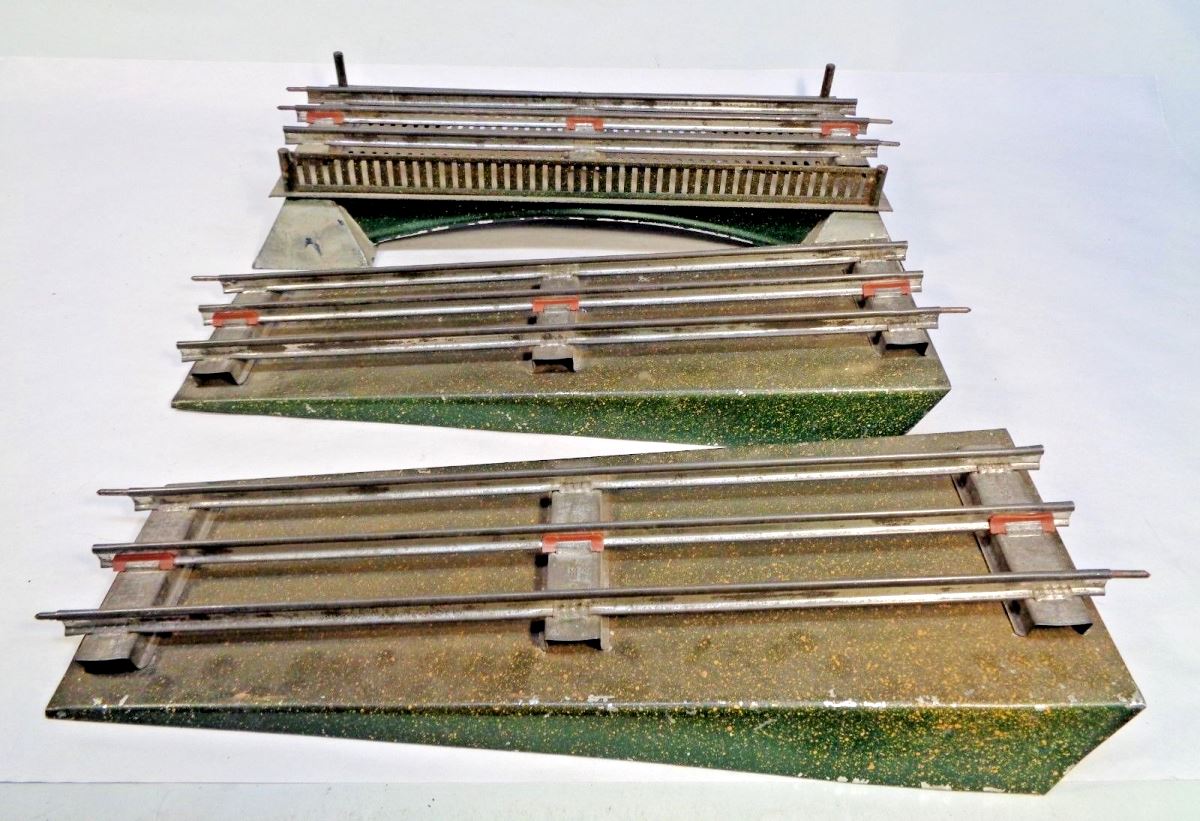
Circa 1921-28 - Here's a No. 101-2-3. The ramps are gray with green tops and the viaduct section has red painted fencing.

Circa 1928 - Look closely the approaches are flat and the center section is flat to the ground. The 101 was last cataloged in 1928 and we believe this is what it looked like in 1928.
Circa 1923-1928 - A No. 101.

Late version with the semaphore - this one is rubber stamped "Made in the Ives Shops"

| O Gauge | Locomotives | Passenger | Freight | Trolleys |
| Wide Gauge | Boats | Boxes | Specials | Index |
| One Gauge | Catalogs | Accessories | Wiring | Factory |
